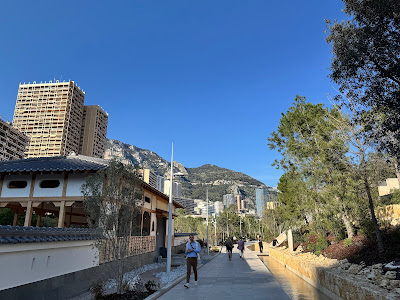王修含醫師演講紀錄:單極電波治療
主題:Enhancing safety and efficacy through physical and mathematical analysis of non-invasive monopolar radiofrequency
以物理與數學分析提升非侵入式單極電波治療之安全性與效能
日期/ 時間:2025年3月28日 (周五)
地點:Grimaldi Forum
城市:Monte-Carlo, Monaco.
會議名稱:AMWC 2025
Enhancing safety and efficacy through physical and mathematical analysis of non-invasive monopolar radiofrequency
Shiou-Han Wang, MD
<Abstract 1>
Monopolar
radiofrequency (MRF) utilizes electric currents to rejuvenate skin,
demanding operator expertise in the technique's scientific and artistic
aspects. High-frequency ultrasound ensures safety by evaluating skin
thickness and thermal relaxation times, while a cooling system adjusts
the depth of MRF to protect the skin. Innovations such as superpass
stamping enhance treatment precision and effectiveness. By integrating
scientific principles with artistic techniques, MRF treatments achieve
enhanced safety and efficacy, influenced by operator skill and the
collagen temperature curve. A physical and mathematical analysis is
crucial for optimizing non-invasive monopolar radiofrequency, which is
essential in aesthetic applications to blend science and art for optimal
results.
<Abstract 2>
Introduction:
Monopolar
radiofrequency (MRF) is a pivotal technique in aesthetic medicine. It
utilizes electric current to induce heat within soft tissues, promoting
collagen contraction and neocollagenesis. However, treatment outcomes
can widely vary based on the operator's proficiency. By delving into the
underlying physics and anatomical structures, comprehensive techniques
can be formulated to standardize and refine MRF treatments.
Materials and Methods:
High-frequency
ultrasound is crucial in assessing skin thickness and thermal
relaxation times, ensuring treatment safety and optimization. An
integrated cooling system adjusts MRF depth by modifying impedance,
safeguarding the skin from excessive heat. Examining manufacturer
patents reveals enhanced firing methods like superpass stamping or
sliding techniques. Understanding the roles of the superficial
musculoaponeurotic system (SMAS) and retaining ligaments is vital for
addressing facial aging. Patient feedback indicates that employing
multiple-pass vectors at the highest tolerable energy level effectively
accumulates heat. The collagen tissue-temperature curve is pivotal in
determining appropriate heating durations. Mathematical heat transfer
and thermodynamics models further refine MRF treatments' precision,
identifying fibrous septae as primary conduits for electric current in
fatty tissues.
Results:
Implementation of specific techniques
has notably enhanced the safety and efficacy of MRF in aesthetic
procedures. Critical components such as high-frequency ultrasound,
advanced cooling systems, and precise firing methods are indispensable.
The response to accumulated energy follows an exponential-like curve. In
contrast, the strategic use of multiple-pass vectors and the collagen
tissue-temperature curve are decisive in optimizing heating durations
for targeted regions.
Conclusion:
MRF therapy retains its
critical role in aesthetic applications. Comprehensive techniques
grounded in physical analysis and mathematical modeling can
significantly enhance the safety and efficacy of MRF treatments. This
presentation aims to review pertinent studies and introduce updated
concepts in MRF therapy to propel clinical practices forward.
References:
1. Appl Mech Rev. 2009 Jul 9;62(5):050801.
2. Arch Dermatol. 2004 Feb;140(2):204-209.
3. J Am Acad Orthop Surg. 2000 Sep-Oct;8(5):305-313.
4. J Am Board Fam Pract. 1991 Nov-Dec;4(6):419-26.
5. J Drugs Dermatol. 2006 Sep;5(8):707-12.
6. Phys Med Biol. 1996 Nov;41(11):2271-93.
7. Lasers Surg Med. 2015 Feb;47(2):183-95.
8. Processes. 2020 Dec;8(12):1660. doi: 10.3390/pr8121660.
9.
Laser-Tissue Interactions: Fundamentals and Applications. 3rd enlarged
ed. Berlin Heidelberg: Springer; 2003. ISBN: 9783540721918.
10. Hruza G, Avram M. Lasers and Lights. 3rd ed. Elsevier Saunders; 2012.
11. AJR Am J Roentgenol. 2000 Feb;174(2):323-31.
12. Arch Dermatol. 1998 Oct;134(10):1255-9. doi: 10.1001/archderm.134.10.1255.
13. AJR Am J Roentgenol. 2000 Feb;174(2):323-31. doi: 10.2214/ajr.174.2.1740323.
14. Clin Plast Surg. 2016 Jul;43(3):551-6. doi: 10.1016/j.cps.2016.03.013.
15. J Lasers Med Sci. 2017 Summer;8(3):118-122. doi: 10.15171/jlms.2017.21.
16.
Hruza GJ, Tanzi EL, Dover JS, Alam M. Lasers and Lights: Procedures in
Cosmetic Dermatology Series. 4th ed. Dover JS, Alam M, editors. 2017. p.
109.
17. J Biomed Opt. 2006;11(3):34020.
18. Science. 1983;220(4596):524-7. doi: 10.1126/science.6836297.
19. Surg Radiol Anat. 2002;24:183-189.
20. Phys Med Biol. 1996 Nov;41(11):2251-69.
21. Br J Dermatol. 1987 Oct;117(4):419-28.
22. Int J Mol Sci. 2019 May;20(9):2126.
23. Adv Wound Care (New Rochelle). 2016 Mar;5(3):119-136.
24. Nutrients. 2020 Mar;12(3):870.
25. J Am Acad Dermatol. 2011 Mar;64(3):524-35.
26. Aesthet Surg J. 2007 Jan-Feb;27(1):19-28.
27. Kim HJ, Seo KK, Lee HK, Kim J. Clinical Anatomy of the Face for Filler and Botulinum Toxin Injection. 2016.
28. Facial Plast Surg Clin North Am. 2018 May;26(2):123-134.
29. Proc Inst Mech Eng H. 2002;216(3):171-83.
30. Fire Mater. 1976;3(2):100-105.
31. Am J Pathol. 1947 Sep;23(5):695-720.
32. J Drugs Dermatol. 2020 Jan;19(1):20-26.
33. Cosmet Dermatol. 2011 Jul;24(7):327-330.
34. Facial Plast Surg Clin North Am. 2011 May;19(2):347-359.
To AMWC Monaco 2025




















